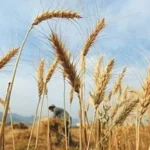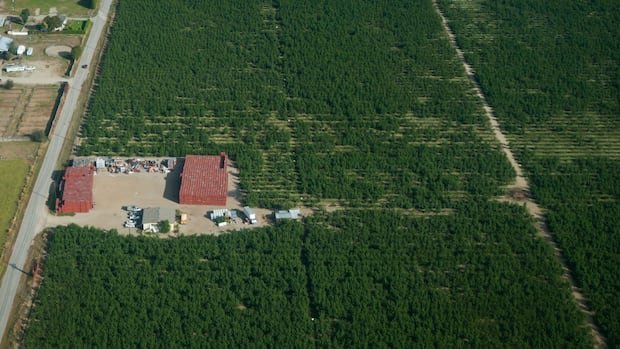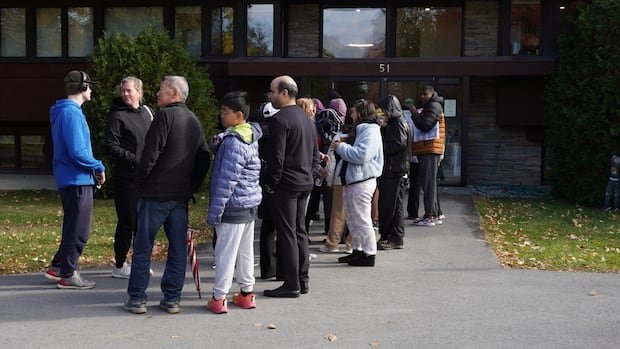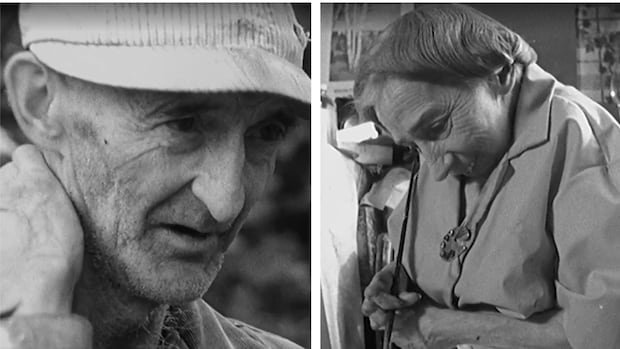Peter Simonsen says the buds on the peach trees on his farm in Naramata, British Columbia, are already starting to swell early.
But that makes him nervous.
“They look healthy and good, but I’m a little worried, because it’s been very similar to last year,” he said, referring to the warm spell last winter that preceded a catastrophic cold snap that decimated crops in the Okanagan and elsewhere in British Columbia.
“And if you look at the buds on the fruit, they’re starting to swell a little bit. They’re breaking dormancy, which is too early for that to happen.”
This week marks one year since the deep freeze that saw temperatures drop to around -30C in some fruit growing regions.
As plants were already budding due to earlier heat, one year’s crops, including peaches and nectarines, were wiped out, along with the vast majority of cherries and grapes used in British Columbia wines. The loss cost hundreds of millions of dollars and left many farmers struggling to stay afloat.
Farmers now say they are crossing their fingers for 2025, but with the end of winter still two months away, it’s too early to know for sure whether the weather will cooperate.
Environment Canada meteorologist Brian Proctor says a “hint” of colder weather is coming to the Okanagan over the next week, but it’s not forecast to be as cold or as prolonged as last year.
Proctor said temperatures could drop to -15C over the weekend in the region, but the cold will not last long, adding that the weather pattern is moving further east than this time last year.
Simonsen, who is also president of the British Columbia Fruit Growers Association, said he is hopeful for a crop this year, but adds that any kind of extreme cold in the coming months could cause damage if the buds are not dormant.
He said the closer it gets to spring, the more sensitive fruit trees are to temperature.
“Last year it was -27, which was terrible. But, if we have one [cold snap] “In February or March, if they continue to break dormancy, it only has to get to -10 or -15 or something like that, for there to be damage.”
“Cautiously optimistic”
Alan Gatzke, a third-generation farmer about 100 kilometers north in Oyama, British Columbia, lost his entire crop of peaches and nectarines, and about 85 percent of his cherries, last year.
He said he has also started to see some buds starting to swell, but remains optimistic that 2025 will produce healthy crops.
“Cautiously optimistic would be a good description of how I feel, because the orchard is looking great right now. It’s been a while since I’ve seen such a good flush of buds, so we’re anticipating a full harvest, at least it goes wrong.” , he stated.
Gatzke said ideally the weather in the region would be a little colder at night to slow the bud awakening process.
“Minus five at night and plus five during the day would be perfect right now. But we haven’t had minus five,” he said.
“I see in the forecast that we could be getting down to -8 or nine, and that would be a good thing, just slowing down a little bit so that flowering happens when there’s no frost.”
British Columbia’s wine industry is facing catastrophic losses in the wine grape harvest this year. As Brady Strachan reports, a prolonged cold snap in January has damaged vineyards across the Okanagan.
The cold snap also destroyed almost all of the grapes used to make British Columbia wines.
The British Columbia government responded by committing additional funding of up to $70 million to replant and strengthen fruit orchards and vineyards.
Michael Bartier, owner and winemaker at Bartier Brothers Winery near Oliver, British Columbia, said the vineyard lost all of its fruit last year and about half of its vines died.
He said this year looks like it will be “much better” than what they went through in 2024.
“We have those outbreaks, they’re there. They look healthy right now. We haven’t had any cold events this year, and there’s nothing in the forecast that looks even remotely alarming. So we’re almost out of the danger period.” ” said.
Struggling farmers
In Kelowna, Jennifer Deol, co-owner of There and Back Again Farms, said she hasn’t seen sprouts on her peach trees yet, but like so many others, she’s holding her breath that a dramatic cold snap won’t happen again. .
“We know that with climate change, weather phenomena are becoming more frequent and severe, and their impact on agriculture is also becoming more frequent and severe. That is why we are cautiously optimistic, but anything can happen. We are still in winter” , said. saying.
Last year’s devastation left many small farms like Deol’s struggling to make ends meet.
He said they have deferred payments on the farm for the past three years because they don’t make enough money. They have also decided to put the apple orchard part of their farm up for sale.
“We are operating at a loss and I have to work full time on top of farming just to pay for our food and our electricity,” he said.
He said last year the farm lost all of its peaches and cherries and 80 percent of its table grapes, and had to rely on vegetable sales to stay afloat.
“If we can have a decent year, we can replenish our account. But we barely made it, and we only made it because of community support and trying to defend agriculture,” he said.








